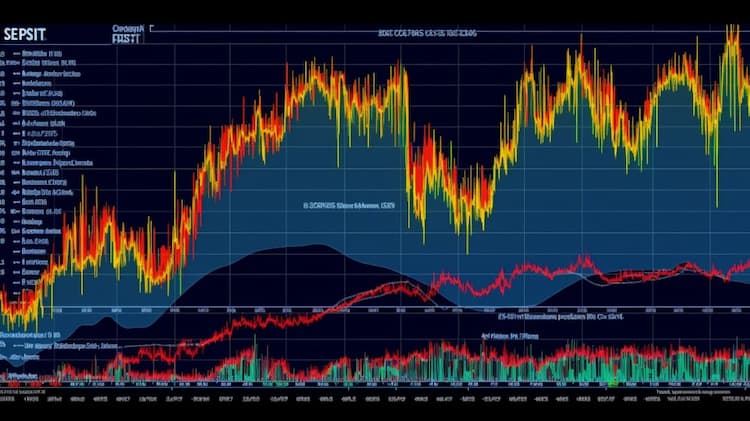
The best Technology ETFs to invest in
Discovering the ideal Technology ETFs for investment can be a daunting task amidst the ever-evolving tech landscape. This article serves as a comprehensive guide, exploring a carefully curated selection of top-performing Technology ETFs, designed to help investors navigate the dynamic market and make informed decisions to maximize their returns. ## Best Technology ETFs: A Comparative Analysis
When it comes to investing in the technology sector, exchange-traded funds (ETFs) offer an attractive way to gain exposure to this fast-growing industry. One standout ETF in the technology sector is the Technology Select Sector SPDR Fund (XLK). XLK is one of the most popular technology ETFs, providing investors with exposure to some of the largest tech companies in the United States, such as Apple, Microsoft, and Alphabet (Google's parent company). The fund aims to track the performance of the Technology Select Sector Index, making it a top choice for investors seeking broad exposure to the technology market.
Comparing XLK to another notable technology ETF, the Invesco QQQ Trust (QQQ), we find some interesting differences. QQQ tracks the Nasdaq-100 Index, which includes 100 of the largest non-financial companies listed on the Nasdaq Stock Market. While QQQ does have a significant technology component, it also includes companies from other sectors like consumer discretionary and healthcare. This diversity might appeal to investors seeking broader exposure to growth companies beyond pure-play technology firms.
Understanding the Role of Technology ETFs in Your Portfolio
Technology ETFs can play a crucial role in a well-diversified investment portfolio, especially for investors with a long-term growth mindset. The technology sector has been a major driver of innovation and disruption in various industries, and technology ETFs can provide exposure to companies at the forefront of these developments. However, investors should be aware that the technology sector can be more volatile than others, so risk tolerance and time horizon should be taken into consideration.
As with any investment decision, it's essential to align technology ETFs with your overall investment goals and risk tolerance. Additionally, diversification across different sectors and asset classes can help mitigate the risks associated with investing in a single industry.
 XLK overlap What are the best Technology ETFs to invest in?
XLK overlap What are the best Technology ETFs to invest in?
Factors to Consider When Choosing Technology ETFs
When evaluating technology ETFs, consider the following factors:
Portfolio Composition: Examine the ETF's holdings to understand the specific technology companies it invests in. Some ETFs may focus on specific subsectors like cybersecurity, cloud computing, or semiconductors.
Expense Ratio: Take note of the ETF's expense ratio, as lower fees can have a significant impact on your overall returns over time.
Performance: Review the historical performance of the ETF to gauge how it has performed in various market conditions.
Size and Liquidity: Consider the size and liquidity of the ETF, as larger funds tend to have better liquidity and tighter bid-ask spreads.
Pros and Cons of Technology ETFs
Like any investment, technology ETFs come with their own set of advantages and disadvantages:
Pros:
Diversification: Technology ETFs offer exposure to a basket of technology-related companies, reducing the risk of investing in individual stocks.
Growth Potential: The technology sector has historically shown strong growth potential, making technology ETFs attractive to investors seeking capital appreciation.
Convenient and Accessible: ETFs can be bought and sold like stocks, providing ease of trading and accessibility to investors of all sizes.
Cons:
Volatility: Technology stocks can be more volatile than stocks in other sectors, leading to potentially larger price swings.
Concentration Risk: Some technology ETFs may have significant exposure to a few dominant tech companies, leading to concentration risk.
Market Dependency: Technology ETFs' performance is influenced by the overall sentiment towards the technology sector and market conditions.
Conclusion
Investing in technology ETFs can be an excellent strategy for investors seeking exposure to the rapidly evolving technology sector. However, it's crucial to consider your investment objectives, risk tolerance, and time horizon before making any investment decisions. Diversification across various sectors and asset classes can help balance the risks associated with technology investing.
Disclaimer: This article is for informational purposes only and does not constitute investment advice. It does not provide any investment advisory services. Please consult with a professional financial advisor before making any investment decisions.
Sources:
QQQ ETF issuer
QQQ ETF official page
FAQ
What is the purpose of investing in Technology ETFs?
Investing in Technology ETFs allows investors to gain exposure to a diversified portfolio of technology companies. These ETFs typically focus on the technology sector, which includes companies involved in software development, hardware manufacturing, internet services, telecommunications, and more.
What factors should I consider when selecting a Technology ETF?
When selecting a Technology ETF, consider factors such as the expense ratio, the fund's performance track record, the ETF's holdings and diversification, the fund's liquidity, and the ETF provider's reputation and expertise in the technology sector.
Which Technology ETFs have performed well historically?
Past performance does not guarantee future results, but some popular Technology ETFs that have historically performed well include the Invesco QQQ Trust (QQQ), Technology Select Sector SPDR Fund (XLK), and Vanguard Information Technology ETF (VGT).
Are there any Technology ETFs focused on specific sub-sectors?
Yes, there are Technology ETFs that focus on specific sub-sectors within the technology industry. Examples include the Global X Cloud Computing ETF (CLOU), ARK Innovation ETF (ARKK), and First Trust Dow Jones Internet Index Fund (FDN).
What are the advantages of investing in Technology ETFs?
Investing in Technology ETFs offers several advantages, including diversification across multiple technology companies, exposure to innovative and high-growth sectors, the convenience of a single investment vehicle, and the potential for capital appreciation.




























